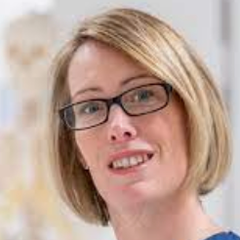You are not currently logged in. Please create an account or log in to view the full course.
What Is Surface Anatomy?
- About
- Transcript
- Cite
Surface Anatomy
In this course, Professor Claire Smith (Brighton and Sussex Medical School) teaches us about surface anatomy. We begin by: (i) understanding what surface anatomy exactly is, and how it relates to other studies of the human body, and how variation between bodies is completely natural; before (ii) looking at the surface anatomy of the thorax and the thoracic cavity; and then (iii) understanding the surface anatomy of the heart and its major blood vessels; following onto the (iv) surface anatomy of the lungs within the thoracic cavity; before finally (v) understanding the surface anatomy of the circulatory system and how we might use this information to take an arterial pulse.
What Is Surface Anatomy?
In the first mini-lecture, we ask the question: what is surface anatomy? We learn how anatomy is the study of the structure of our bodies, including osteology, histology, gross anatomy, imaging, embryology and indeed surface anatomy. As you might imagine, surface anatomy studies the external features of a biological organism. But why is this important? We learn how surface anatomy helps us to relate structures of organs and tissues to their functions, allows us better to interpret images, and is the basis for intervention and physical examination. To finish off, we understand the natural variation between organisms of the same species, and how your human body will never be the same as a medical textbook as a result of factors including skin colour, body size, or gender and sex.
Cite this Lecture
APA style
Smith, C. (2022, November 17). Surface Anatomy - What Is Surface Anatomy? [Video]. MASSOLIT. https://massolit.io/courses/surface-anatomy
MLA style
Smith, C. "Surface Anatomy – What Is Surface Anatomy?." MASSOLIT, uploaded by MASSOLIT, 17 Nov 2022, https://massolit.io/courses/surface-anatomy

